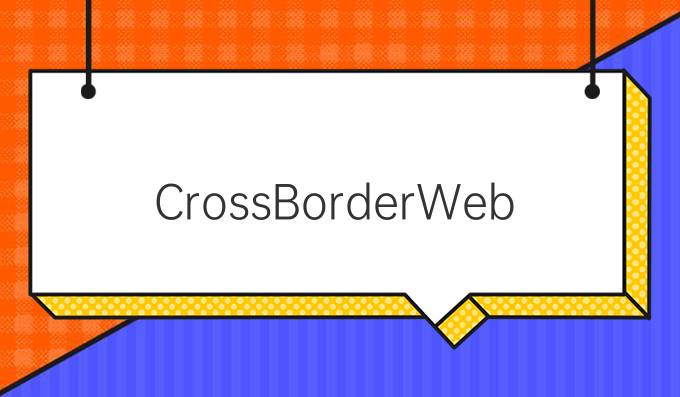
4007-702-802
Follow us on:



The source of the article:ManLang Publishing date:2024-05-17 Shared by:

Abstra: In today's globalized economy, businesses are increasingly looking to expand their reach internationally by building crossborder websites. These websites serve as a crucial tool in navigating international markets and reaching a broader audience. This article explores the key considerations and strategies involved in crossborder website building, highlighting the importance of cultural sensitivity, language localization, crossborder payment gateways, and international SEO optimization.
When building a crossborder website, it is essential to consider the cultural nuances and preferences of the target audience. Different cultures have varying expeations when it comes to website design, content, and user experience. By demonstrating cultural sensitivity in your website design and content, you can establish a deeper conneion with international customers and build trust.

Furthermore, cultural sensitivity extends to language use, imagery, colors, and symbols. Ensure that your website content is translated accurately and appropriately for the target market, taking into account cultural context and linguistic nuances. Avoid using offensive or insensitive language and imagery that may alienate potential customers.
Another important aspe of cultural sensitivity is understanding local customs, holidays, and traditions. By incorporating elements of local culture into your website, you can show respe for the target audience and create a more personalized and engaging experience for users.
Language localization is a critical component of crossborder website building, as it involves adapting website content to suit the language preferences of the target audience. Providing content in the local language significantly enhances user experience and helps build credibility and trust with international customers.
When localizing your website content, consider faors such as language nuances, diales, and regional variations. Use professional translators or localization experts to ensure accurate and culturally appropriate translations. Additionally, localize not just text but also images, videos, and multimedia content to resonate with the target audience.
Implementing language localization can also involve creating multilingual websites with languageswitching options, optimizing keywords for different languages, and tailoring marketing messages to suit cultural preferences. By prioritizing language localization, businesses can unlock new opportunities in international markets and conne with a diverse global audience.
Facilitating crossborder transaions is a key consideration for businesses building websites for international markets. Integrating crossborder payment gateways that support multiple currencies and payment methods is essential for enabling seamless and secure online transaions for global customers.
Choose payment gateways with robust security features and fraud proteion measures to safeguard customer data and build trust with international shoppers. Ensure that your payment gateway complies with international regulations and standards to avoid legal complications and issues with crossborder payments.
Consider offering popular payment methods in the target market, such as digital wallets, bank transfers, and local payment options, to cater to the diverse preferences of global customers. Simplifying the checkout process and providing transparent pricing in local currencies can also improve conversion rates and customer satisfaion.
Search engine optimization (SEO) is crucial for driving organic traffic to your crossborder website and improving visibility in international search results. International SEO optimization involves optimizing website content, meta tags, and keywords for different languages and regions to attra relevant traffic from global markets.
Use geotargeting strategies to target specific countries or regions with localized content and keywords. Create countryspecific web pages, subdomains, or direories to improve local search rankings and enhance user experience for international visitors. Implement hreflang tags to signal to search engines that your website has multilingual content available for different regions.
Condu keyword research for each target market to identify relevant search terms and phrases used by local audiences. Tailor your content strategy and SEO efforts to align with the cultural and linguistic preferences of international users, ensuring that your website ranks well in global search results and attras organic traffic from diverse regions.
Summary: Building a successful crossborder website requires careful consideration of cultural sensitivity, language localization, crossborder payment gateways, and international SEO optimization. By implementing these strategies effeively, businesses can expand their reach into international markets, conne with a diverse global audience, and drive growth and success in the global economy.
What you might be interested in
Mastering Content Marketing: Strategies to Engage, Convert, and Retain Your Audience
2025-04-13Leveraging口碑种草: Strategies for Cultivating Trust and Driving Consumer Engagement Through WordofMouth
2025-04-13Unlocking Success: Comprehensive Strategies for Effeive SEO推广优化 in 2025
2025-04-13Unlocking Growth: Comprehensive SEM Optimization and Managed Services for Your Business Success
2025-04-13Effeive Strategies for Boosting Your Website Promotion: A Comprehensive Guide to Digital Marketing S
2025-04-13Building a Comprehensive Portal Website: A StepbyStep Guide to Creating an Engaging Online Hub
2025-04-13Digital Outreach Specialist: Conneing Brands with Online Audiences
2025-04-13Comprehensive SEO整站优化平台: Elevate Your Websites Rankings and Visibility Effortlessly
2025-04-13What you might also be interested in
Mastering the Art of Content Marketing: A Step-by-Step Guide
2024-03-12Maximizing Online Visibility: Innovative Strategies for引流推广公司 to Boost Engagement and Drive Traffic
2024-10-07Exploring Effeive Marketing Strategies: A Comprehensive Guide to Boosting Brand Awareness and Drivin
2025-03-02Unlocking the Power of Content Marketing: Strategies to Engage, Convert, and Retain Your Audience
2025-02-16Optimizing SEM Outsourcing: Strategies for Enhanced Digital Marketing Performance
2024-12-26Maximizing Online Visibility: The Ultimate Guide to SEO Optimization for Network Marketing
2024-05-25Unlocking Success: Innovative Strategies for Effeive Content Marketing Formats
2024-10-12